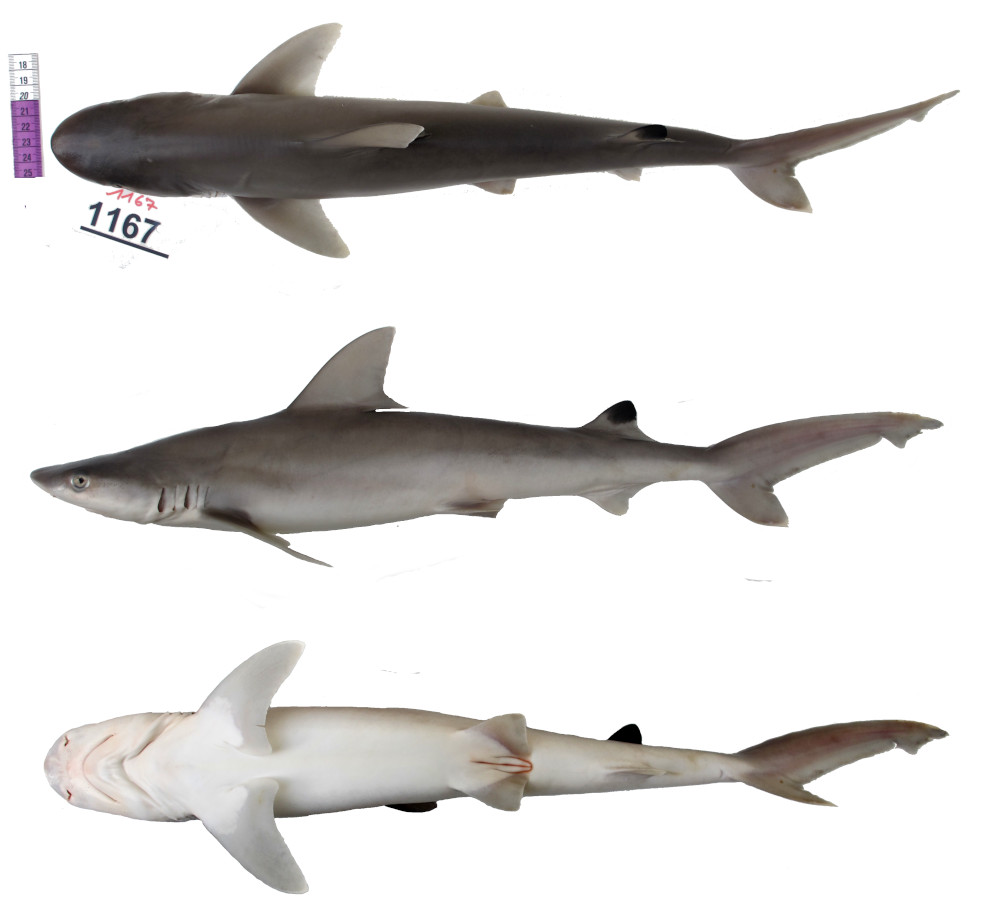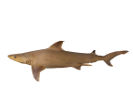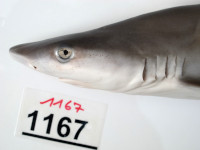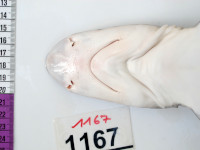Carcharhinus humani
White & Weigmann, 2014
Human’s Whaler Shark
Classification: Elasmobranchii Carcharhiniformes Carcharhinidae
Reference of the original description
Carcharhinus humani sp. nov., a new whaler shark (Carcharhiniformes:Carcharhinidae) from the western Indian Ocean. Zootaxa, 3821(1), 71–87
Carcharhinus humani sp. nov., a new whaler shark (Carcharhiniformes:Carcharhinidae) from the western Indian Ocean. Zootaxa, 3821(1), 71–87
Types
Carcharhinus humani
Holotype: ZMH: 26030; Paratype: ANSP: 25838; ANSP: 55298; CSIRO: H 6891-01; ZMH: 26031;
Carcharhinus humani
Holotype: ZMH: 26030; Paratype: ANSP: 25838; ANSP: 55298; CSIRO: H 6891-01; ZMH: 26031;
Description :
Citation: Carcharhinus humani White & Weigmann, 2014: In: Database of modern sharks, rays and chimaeras, www.shark-references.com, World Wide Web electronic publication, Version 01/2026
Please send your images of "Carcharhinus humani" to info@shark-references.com

Carcharhinus humani White & Weigmann, 2014, ERB 1167, male, 60, 0 cm TL, Kenya © Frederik H. Mollen (Elasmobranch Research Belgium)

Carcharhinus humani White & Weigmann, 2014, ERB 1167, male, 60, 0 cm TL, Kenya © Frederik H. Mollen (Elasmobranch Research Belgium)
Common names
Human’s Whaler Shark
Human’s Whaler Shark
Short Description
Orignal description of WHITE & WEIGMANN, 2014 [21012]: "A small species of Carcharhinus with: a moderately long and narrowly rounded snout; interdorsal space with a weak ridge usually present on midline, 20.4–22.0% TL; first dorsal fin moderately tall and slightly falcate, origin just anterior to pectoral-fin free rear tip, length 13.4–14.6% TL, 1.3–1.5 times height, inner margin 1.7–2.3 times in base; second dorsal fin broadly triangular, height 39–48% of first dorsal-fin height, origin about opposite to anal-fin origin; anal fin falcate, height 0.8–1.0 times second dorsal height, base 0.9–1.2 times second dorsal-fin base; colour pale brownish to grey dorsally, whitish ventrally; second dorsal fin with a black blotch on upper one to two thirds of fin, not extending onto upper surface of body and strongly demarcated from ground colour; most other fins with whitish outer margins; total vertebral counts 153–160 in the four type specimens (152–167 in Bass et al., 1973); precaudal counts 75–79 (74–85 in Bass et al., 1973); monospondylous precaudal counts 45–48; diplospondylous precaudal counts 27–32; diplospondylous caudal counts 78–81"
Orignal description of WHITE & WEIGMANN, 2014 [21012]: "A small species of Carcharhinus with: a moderately long and narrowly rounded snout; interdorsal space with a weak ridge usually present on midline, 20.4–22.0% TL; first dorsal fin moderately tall and slightly falcate, origin just anterior to pectoral-fin free rear tip, length 13.4–14.6% TL, 1.3–1.5 times height, inner margin 1.7–2.3 times in base; second dorsal fin broadly triangular, height 39–48% of first dorsal-fin height, origin about opposite to anal-fin origin; anal fin falcate, height 0.8–1.0 times second dorsal height, base 0.9–1.2 times second dorsal-fin base; colour pale brownish to grey dorsally, whitish ventrally; second dorsal fin with a black blotch on upper one to two thirds of fin, not extending onto upper surface of body and strongly demarcated from ground colour; most other fins with whitish outer margins; total vertebral counts 153–160 in the four type specimens (152–167 in Bass et al., 1973); precaudal counts 75–79 (74–85 in Bass et al., 1973); monospondylous precaudal counts 45–48; diplospondylous precaudal counts 27–32; diplospondylous caudal counts 78–81"
Distribution
western Indian Ocean near the Socotra Islands, off Kuwait, Mozambique, and South Africa [21012] Source: www.gbif.org
western Indian Ocean near the Socotra Islands, off Kuwait, Mozambique, and South Africa [21012] Source: www.gbif.org
Dentition
Orignal description of WHITE & WEIGMANN, 2014 [21012]: "upper anterior teeth oblique and blade-like, coarsely serrated, lateral margin deeply notched and with several large, smooth basal cusplets; lower anterior teeth narrower, slightly oblique, lateral margins notched and usually several smooth basal cusplets; total tooth row counts 24–26/22–25, or 46–50"
Orignal description of WHITE & WEIGMANN, 2014 [21012]: "upper anterior teeth oblique and blade-like, coarsely serrated, lateral margin deeply notched and with several large, smooth basal cusplets; lower anterior teeth narrower, slightly oblique, lateral margins notched and usually several smooth basal cusplets; total tooth row counts 24–26/22–25, or 46–50"
Remarks
shark-references Species-ID=14062;
shark-references Species-ID=14062;




















